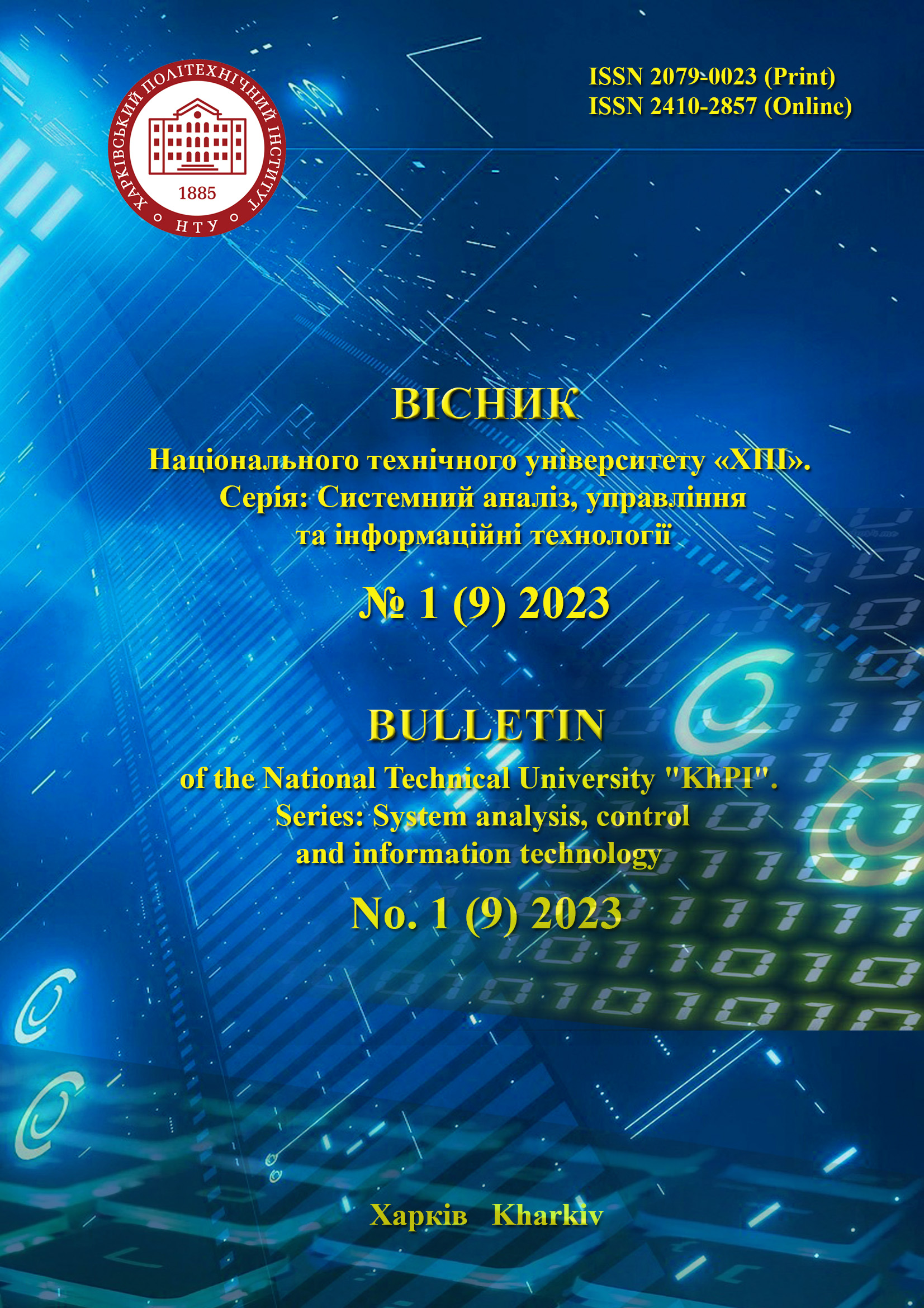FORMATION OF A RECOMMENDATION SYSTEM FOR THE "SMART REGION" FOR THE PURPOSE OF CHOOSING INFORMATION TECHNOLOGIES AND THEIR IMPLEMENTATION WHEN CREATING APPLICATIONS
DOI:
https://doi.org/10.20998/2079-0023.2023.01.05Keywords:
infrastructure, recommendation system, information technology platform, web application, data, smart city, smart region, algorithmAbstract
An analysis of the possibility of implementing the most promising methodologies aimed at creating the infrastructure of a "smart" region was carried out. A detailed study of research-relevant scientific intelligence allows us to highlight the best developments. Many researchers focus only on the theoretical aspect of the issue. The authors of the article analyzed the principles of creating an information technology platform designed to facilitate the process of interaction of a resident of the region with the surrounding infrastructure. The formation of a "smart region" is designed to ensure active communication between representatives of various spheres of the agglomeration, i.e. local government bodies and various branches of the region’s functioning. It is the cooperation of these important life support links of the conglomeration of settlements that allows the development of a strategy aimed at improving living conditions and efficient use of resources. Today, there are already a number of successful examples of the formation of a certain basis and the laying of successful foundations for the development of "smart regions". It is the analysis of the best methods with the goal that becomes the basis of the application for the implementation of the "Smart Region of Zakarpattia" concept and the development of its own innovative information technology platform for the implementation of "smart" environment technologies. It is through the development of a high-quality information technology platform that the smart region is managed in order to improve the quality of services offered to citizens and make all management processes more efficient. In order to find the most optimal way of designing and meeting the community’s requirements, a recommendation system for selecting information technologies and their implementations is being developed, and as a result, we should get a balanced, optimal application model for the "Smart Region of Transcarpathia" information technology platform.
References
Morandi C., Rolando A., Di Vita S. From Smart City to Smart Region. Digital Services for an Internet of Places. Milano, 2016. 103 p.
Vladova G., Knieling J. “Smart Region” governance for innovation. Rural–Urban Linkages for Sustainable Development. Hamburg, 2020, pp. 176–190. DOI: 10.4324/9780429288111-11.
Arneodo F., Castelli R., Botta D. Towards a “Smart Region” paradigm: Beyond Smart Cities borders: Piedmont Region experience. Proc. International Conference of Electrical and Electronic Technologies for Automotive. (15-16 June 2017, Torino). Torin, 2017, pp. 1–8. DOI: 10.23919/eeta.2017.7993225.
Fichman R. G. Real Options and IT Platform Adoption: Implications for Theory and Practice. Information Systems Research. 2004, vol. 15, no. 2, pp. 132–154. DOI: 10.1287/isre.1040.0021.
Eisenmann T., Parker G., Van Alstyne M. Platform Envelopment. Strategic Management Journal. 2011, vol. 32, no. 12, pp. 1270–1285. DOI: 10.1002/imj.935.
Cusumano M.A. The evolution of platform thinking. Communications of the ACM. 2010, vol. 53, no. 1, pp. 32–34.
Cusumano M. A., Gawer A. The elements of platform leadership. MIT Sloan Management Review. 2002, pp. 51–58. DOI: 10.1109/emr.2003.1201437.
Llewellyn D. W. T., Autio E., Gann D. M. Architectural Leverage: Putting Platforms in Context. Academy of Management Perspectives. 2014, vol. 28, no.2, pp.198–219. DOI:10.5465/amp.2011.0105.
Robinson D., Rip A., Mangematin V. Technological agglomeration and the emergence of clusters and networks in nanotechnology. Research Policy. 2007, vol. 36(6), pp. 871-879.
Kuhn T. S. The Structure Of Scientific Revolutions. Chicago, University of Chicago Press, 1970. 210 p.
Kim B. Managing the transition of technology life cycle. Technovation. 2003, vol. 23, issue 5, pp.371–381.
Wheelwright S. C., Clark K. B. Creating project plans to focus product development. Harvard Business Review. 1992, vol. 70, no. 2, pp. 70–82.
Simpson T. W., Maier J. R., Mistree F. Product platform design: Method and application. Research in Engineering Design. 2001, vol. 13, pp. 2–22. DOI:10.1007/s001630100002.
Wortmann H., Alblas A. Product platform life cycles: a multiple case study. International Journal of Technology Management. 2009, vol. 48, no. 2, pp. 188–201. DOI:10.1504/ijtm.2009.024915.
Meyer M.H., Utterback J.M. The product family and the dynamics of core capability. Cambridge, Massachusetts Institute of Technology, 1993. 32 p.
Saaty T. L. The Analytic Hierarchy Process: Planning, Priority Setting, Resource Allocation. New York, McGraw-Hill, 1980. 287 p.
Downloads
Published
How to Cite
Issue
Section
License

This work is licensed under a Creative Commons Attribution 4.0 International License.
Authors who publish with this journal agree to the following terms:
- Authors retain copyright and grant the journal right of first publication with the work simultaneously licensed under a Creative Commons Attribution License that allows others to share the work with an acknowledgement of the work's authorship and initial publication in this journal.
- Authors are able to enter into separate, additional contractual arrangements for the non-exclusive distribution of the journal's published version of the work (e.g., post it to an institutional repository or publish it in a book), with an acknowledgement of its initial publication in this journal.
- Authors are permitted and encouraged to post their work online (e.g., in institutional repositories or on their website) prior to and during the submission process, as it can lead to productive exchanges, as well as earlier and greater citation of published work (See The Effect of Open Access).


